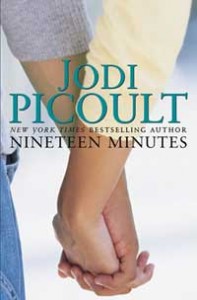What we read is a picture of who we are
Books are all about learning and escaping to alternate realities — past or future, real or imaginary, possible or impossible. So what do the books that we are reading say about the state of our reality? More importantly, what do they say about us?
Best-sellers lists, in a way, could be reflections of the national mood or the mindset of a certain period. They clearly represent some of the most popular books of the time, but certainly not all. Many would say that the Nora Robertses and Danielle Steels of the world are best-sellers, but not literary greats. There is a difference.
What seems to be eternally popular are exactly those kinds of fiction novels, in which thrill, murder, intrigue, love and drama dominate the pages. These might be referred to as the junk food of the book world, but everyone needs a little indulgence every once in a while.
No matter the era, historical novels will also always be a literary staple. We seem to nurture an abiding obsession with returning to the past and escaping our present, no matter if it is leaving the 1960s for the Italian Renaissance — as readers apparently did in droves with Irving Stone’s The Agony and the Ecstasy — or forgetting 2012 for the era of Vincent van Gogh in Sacré Bleu. We continually return to our pasts, determined to re-explore and re-appreciate.
How much can one really say, however, about the significance of a list of books that is somewhat arbitrarily created — The New York Times has a secret formula used to derive their best-sellers lists, and not even the Book Review staff know how it fully operates — and is driven by so many uncorrelated factors? There are so many books, so many genres, so many different kinds of tastes and people that it becomes more conjecture than accurate analysis.
It is interesting to think about best-sellers as a representation of the culture and people of a certain time. One hundred years from now, social scientists might look at The New York Times’ 2012 Best-sellers List to gain insight into what we and our world were like. Though it might give clues, it will never give the whole picture.
The New York Times Best-Sellers List: A Glorified Sales Report, or a Snapshot of Shifting Literary Tastes?
1. Franny and Zooey, J.D. Salinger
2. The Bull from the Sea, Mary Renault
3. The Fox in the Attic, Richard Hughes
4. The Agony and the Ecstasy,Irving Stone
5. Ship of Fools, Katherine Anne Porter
April 22, 1962: Just as hippiedom and the civil rights movement were beginning to sweep through America, 1962’s best-selling fiction made a return to magical eras of the past — to early 20th-century New York in J.D. Salinger’s Franny and Zooey to classical Athens in Mary Renault’s The Bull From the Sea to the Italian Renaissance via Irving Stone’s pseudo-biographical novel about Michelangelo, The Agony and the Ecstasy. But the list also reflects the darker times lurking beneath the magic, through the personal predicaments of a boy coming of age after World War I in Richard Hughes’ The Fox in the Attic.
1. Fine Things,Danielle Steel
2. Windmills of the Gods, Sidney Sheldon
3. Bolt, Dick Francis
4. Destiny, Sally Beauman
5. The Eyes of the Dragon, Stephen King
April 19, 1987: Two authors who are still household names today graced the top five fiction best-sellers in 1987, Danielle Steel and Stephen King. Such thrilling, emotionally charged and intriguing novels took their place on the best-selling list quickly, but it was the authors who proved they were there to stay.
1.Three Fates, Nora Roberts
2. Everything’s Eventual, Stephen King
3. The Nanny Diaries, Emma McLaughlin and Nicola Kraus
4. The Summons, John Grisham
5. 2nd Chance, James Patterson with Andrew Gross
April 21, 2002: The 2002 list of best-selling fiction again bore witness to some of the most popular, best-known names in the literary world claiming their spots on the list, with Nora Roberts, Stephen King, John Grisham and James Patterson all placing among the top five. The only authors not sold in your local grocery store? Emma McLaughlin and Nicola Kraus, co-authors of The Nanny Diaries, a satirical take on the culture of the rich and powerful in New York City through the eyes of a nanny in Manhattan’s Upper East Side.
1. I Heard That Song Before, Mary Higgins Clark
2. Nineteen Minutes, Jodi Picoult
3. Kingdom Come, Tim LaHaye and Jerry B. Jenkins
4. Obsession,Jonathan Kellerman
5. White Night,Jim Butcher
April 22, 2007: A focus on the dark underbellies of society is reflected in the 2007 list, with four out of the top five best-sellers relating to murder. In Mary Higgins Clark’s I Heard That Song Before, Clark’s protagonist marries a murder suspect; a New Hampshire town reels in the aftermath of a high school shooting in Jodi Picoult’s Nineteen Minutes; Jonathan Kellerman’s Obsession details an investigation of a deathbed murder confession; and in Jim Butcher’s White Night, a supernatural murderer preys on wizards in Chicago.
1. The Lost Years, Mary Higgins Clark
2. Guilty Wives, James Patterson and David Ellis
3. Sacré Bleu, Christopher Moore
4. The Limpopo Academy of
Private Detection, Alexander McCall Smith
5. The Shoemaker’s Wife, Adriana Trigiani
April 20, 2012: This year’s fiction best-sellers are all about investigation. Mary Higgins Clark’s protagonist in The Lost Years searches for her father’s killer and missing biblical documents. In Guilty Wives by James Patterson and David Ellis, four friends on a harmless girls’ vacation to Monte Carlo find themselves in prison, falsely accused of murder. In his novel Sacré Bleu, Christopher Moore sets out to answer a historical question: Did Vincent van Gogh really kill himself?





